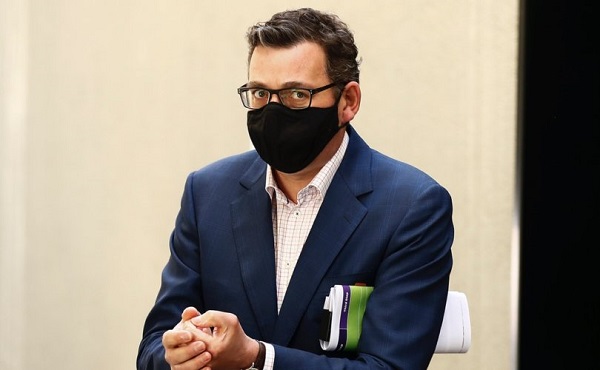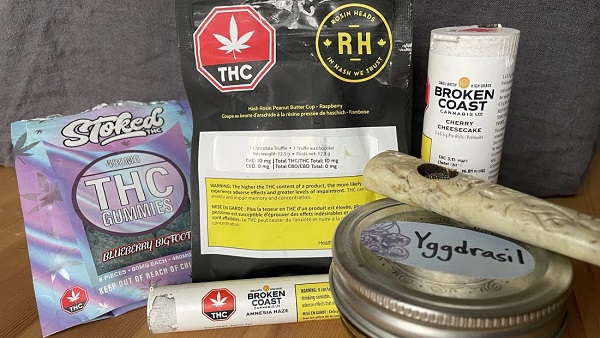Brownstone Institute
The Vaccine Narrative Is as Leaky as the Vaccines

BY
Let’s start with two simple questions. If regulators had the information available to them of the leakage between Covid-19 efficacy rates in controlled trials and their effectiveness in the real world, would they still grant emergency use authorization? Would their legal framework permit them to do so?
Remember, all laws serve a dual purpose. On the one hand, they are permissive and enabling, granting powers to do certain things. On the other, they are limiting and restrictive, ring-fencing what may lawfully be done even by the state.
Second, is Denmark being ruled by an anti-vaxxer government and health authority? From July 1 Denmark, which has an excellent health infrastructure including data collection, banned under-18s from being vaccinated and in mid-September the ban was extended to boosters for under-50s, other than in exceptional circumstances for immunocompromised and high-risk individuals in both cases.
The explanation offered by the health authorities is interesting both for what they said and what they did not say. They anticipate a rise in Covid-19 infections over autumn and winter and “aim to prevent serious illness, hospitalisation and death.” This risk applies to 50-year olds and above and not those younger. Because the vaccines are not meant to prevent infection, they will no longer be offered to the under-50s.
However, governments don’t ban products merely because they are not beneficial. Bans apply only to products that inflict harms. So the unstated reality is the benefit: harm ratio is no longer favorable. The really interesting question therefore is: why don’t they say so? The empirical data from around the world demonstrates negligible to negative vaccine effectiveness for healthy under-50s and greater risk of serious adverse events. Denmark’s decision marks official if implicit acknowledgment that harms are greater than benefits.
Baffling Origins of Lockdown
The lockdowns across the Western world remain, to me, inexplicable and baffling. The abandonment of a century’s worth of cumulative scientific knowledge and global and national pandemic preparedness plans were based neither on new science nor emerging data.
Rather, they were based firstly on apocalyptic modelling using flawed assumptions and secondly on dubious data from China whose authoritarian policies played to innate instincts in our own health bureaucrats and politicians, cheered on by the mainstream media. In a further nod to anti-scientific groupthink conformism, critical and contrarian voices within the health and political establishments were silenced and exorcised. Outside government, they were vilified and expelled from the public square in active collusion with the social media tech giants.
In February 2020, when the cruise ship Diamond Princess docked in Yokohama with 3,711 people on board, Kentaro Iwata, an infectious diseases expert at Kobe University, described it as a “Covid-19 mill.” Outbreaks seed easily on cruise ships because of the high numbers of susceptible elderly passengers living and socializing in confined quarters.
Even under these worst possible conditions, under one-fifth of the captive population was infected, a small number of the infected died and 98.2% recovered. Using age-adjusted data, Oxford University’s Centre for Evidence-Based Medicine estimated the infection fatality rate (IFR) of 0.5% and a case fatality rate (CFR) of 1.1% on the Diamond Princess and, as of March 26, 2020, a global IFR of approximately 0.20% (compared to the seasonal flu’s 0.1% and the Spanish flu’s >2.5% which killed mostly people in the 20–40 age bracket). Reassuringly, even for the over-70s without comorbidities, the IFR was below 1%.
All this ‘bullet proof’ data was thrown out in favor of completely unreliable data and fake videos from China that were then fed into mathematical modelling to produce apocalyptic scenarios that in turn were treated as forecasts by the media and governments. Madness.
India’s Experience: Vaccines Are Not Necessary for Beating Back Covid

India’s experience in mid-2021 proved that vaccines are not necessary for rapid mass recovery from a virulent Covid wave. Anyone who has followed the Covid narrative will remember the horrific pictures in spring-summer 2021 with bodies floating ashore on riverbanks and piling up in cremation grounds. The gradient was broadly similar during the curve’s ascent and descent, with the death rate reaching 1.06 per million people on April 20, peaking at 2.98 on May 21 and 23 and falling back to 1.00 on June 24 (Figure 1). On those three dates India’s full vaccination coverage was 1.26%, 2.96% and 3.53% of the population, respectively.
People questioned the reliability of the data, openly asserting a vast undercount in order to cushion the political embarrassment. Knowing something of India, I disagree and noted more than a hint of racism in the coverage. No matter. Even if the authorities deliberately suppressed the rising numbers of dead, it would be absurd to suggest they did the same with the downward numbers. The symmetrical rise and fall is consistent with the experience of most countries with successive waves of the virus. Whatever else might explain the fall, it certainly wasn’t high vaccination coverage. Herd immunity to the then-dominant Delta variant through a mix of uncontrolled infections and modest vaccination, possibly.
Another contender for the explanation is the widespread use of ivermectin. Mid-crisis in May last year, the state government of Uttar Pradesh (India’s most populous state with 200 million people!), boasted it had been the first to authorize large-scale prophylactic and therapeutic use of ivermectin against Covid-19 in May–June 2020. Studies were confirming that “the drug helped the state to maintain a lower fatality and positivity rate as compared to other states.”
A meta-analysis by Andrew Bryant and Tess Lawrie in the American Journal of Therapeutics of 24 randomized control trials (RCTs) in 15 countries (one of which was subsequently pulled as possibly fraudulent) concluded that ivermectin significantly helps to prevent and treat Covid-19 and, with a 62% mortality reduction, can potentially save millions of lives. They published a follow-up analysis in the same journal that removed the suspect study and the results still showed robust ivermectin efficacy.
An analysis of seven RCTs, covering 1,327 patients, by Swedish physician Sebastian Rushworth found “a 62% reduction in the relative risk of dying among Covid patients treated with ivermectin.” A recent large-scale study from Brazil published on August 31 found that, compared to regular users, non-use of ivermectin increased the risk of Covid-related mortality by 12.5 times and dying from Covid by seven times.
Yet for some strange reason, Western health bureaucracies would neither recommend ivermectin – a low cost, off patent and no profit drug for Big Pharma – nor fund a rigorous but fair (that is, not designed to fail) clinical assessment of its efficacy against Covid. It had morphed into Voldermectin: the drug that must not be named.
Global Experience: Vaccines Are Not Sufficient to Beat Back Covid
My earlier articles show why Australia’s Covid numbers this year demonstrate that vaccines are not sufficient to prevent mass infections, hospitalization and deaths either. Steve Kirsch alerted his Substack subscribers on September 17 to an internal report for the governing Liberal Party of Canada back in June. It makes for depressing reading that will come as no surprise to all of us who have grown increasingly cynical about public health authorities and governing elites. The report draws on official Ontario data, is informed by wide international scholarship and emphasizes that the empirical results are in line with trends in other Canadian provinces and countries.
The fully vaccinated show rise in hospital admissions within 5-6 months; the boosted, within two weeks and rising thereafter for several months. Immunity through natural infection can last up to 20 months. Vaccination shows considerable benefits to over-70s and some benefit to over-60s but virtually no benefit to under-60s with respect to hospitalization and mortality rates. By contrast, adverse events are concentrated in the 18–69 age groups, and especially, in order of most to least, in the 40–49, 50–59 and 30–39 age groups.
Because the “abundance of data” demonstrates that vaccines do not prevent infection, transmission, hospitalization and deaths for the under-60s, “public health policy tools such as, mass vaccination campaigns, mandates, passports and travel restrictions need to be re-evaluated for relevance.” Factoring in also “known adverse events and unknown long-term effects,” the “empirical evidence investigated in this report … does not support continuing mass vaccination programs, mandates, passports and travel bans for all age groups.” The government has sat on this report since June – what a surprise.
Meanwhile there continues to be very little evidence in the real world that countries with high rates of multiple vaccine doses suffer correspondingly lower rates of Covid-19 mortality (Figures 2 and 3). In the two charts, Chile has both the highest booster rollout and the highest Covid-related death rate per capita, while India has the lowest booster coverage yet the second lowest mortality rate.


Some experts point to a worrying trend of rising excess mortality among under-14s in 28 European countries. An article in Vaccine – downloaded more than 110,000 times in preprint – seems to suggest, albeit tentatively, that added risks of serious adverse events are 2.4 and 4.4 times higher than the reduced risk of hospitalization for Moderna and Pfizer vaccines, respectively. Cautioning that the harm-benefit ratio will vary with populations at different Covid risk profiles and in different time periods from the Moderna and Pfizer studies they analyzed, the authors conclude with the need for large, randomized trials to come to robust conclusions. It would help if Moderna and Pfizer would release the granular, individual level data in their possession.
In a follow-up note on Substack, two of the study’s authors note that the normal rate of adverse events for other vaccines is 1-2 per million. The swine flu vaccine (1976) was pulled after it was associated with Guillain-Barre Syndrome at a 1 in 100,000 rate. By comparison, the Pfizer and Moderna clinical trials show 125 adverse events per 100,000 vaccinated people, while preventing between 22-63 hospitalizations.
Another new study of almost 900,000 5-11-year-old children in North Carolina, published in the New England Journal of Medicine, adds to concerns that vaccines don’t just lose their effectiveness in just a few months; they also destroy natural immunity against reinfection severe enough to put them in hospital.
Panels C and D (the study’s authors use “Panel” rather than “Chart”) clearly show that among people infected by the Delta variant, protection against reinfection of the unvaccinated lasts longer than of the vaccinated. The former’s effectiveness was still above 50% eight months later in May 2022 while the latter’s had fallen to zero (Figure 4). But with the Omicron variant, the previously infected are slightly better off vaccinated than unvaccinated after two months (94.3:90.7%) and much better off after four months (73.8:62.9%). The likely, albeit not definitive, explanation is that the vaccines themselves are destroying the protection provided by natural immunity.


Three comments about Panels E and F (Figure 5). First, while the x axis for Panel E is in weeks, Panel F’s is in months. So the first visual impression is misleading. Second, the maximum effectiveness of a vaccine against a reinfection severe enough to require hospital admission is around 88%, reached approximately four weeks after the first dose is administered. By contrast, the initial effectiveness of a previous infection is 100% and remains above 95% (remember the vaccine’s much-touted 95% efficacy rate?) until seven months later.
Third, the effectiveness of a previous infection against reinfection requiring hospitalisation does not decline to the same level as the vaccine’s peak effectiveness until nine months after infection. This is the reality that the CDC denied until recently and used as the justification for discriminating between the vaccinated and unvaccinated for access to public spaces.
Three conclusions follow:
- The risk of severe outcomes for children from infection by current Covid variants is low;
- The risk of severe adverse reactions from vaccines is higher, meaning vaccination is a net harm for young children – exactly why Denmark has banned them for children;
- Exposing healthy children to the risk of infection may be better for both individual and herd immunity than mass vaccinating them.
The FDA is not likely to restore its credibility as the US regulator with the widely ridiculed revelation that the new bivalent boosters were authorized on the basis of trial results from eight mice. Professor Marty Makary from the Johns Hopkins School of Public Health tweeted his concerns about this and also about the announcement of an annual Covid vaccine that is not data-driven and ignores natural immunity as well as the risks of immune imprinting (where the immune system remembers its initial response to infection or vaccination in a way that usually, but not always, weakens the response to future variants of the same pathogen) from a multi-dose vaccination strategy.
From mRNA Vaccine Hesitant to Anti Vaxxer
The Financial Times – as mainstream establishment as they come – recently warned that the US decision to roll out new booster shots without clinical testing on humans – already dubbed the mouse vaccine by some – risks undermining public trust and deepening vaccine hesitancy. “We already have a trust problem in this country and we don’t need to make it worse,” Eric Topol, founder and director of the Scripps Research Translational Institute, said. Yet, even while bemoaning the loss of public trust in health experts and institutions, Topol just couldn’t help himself and smeared the Covid vaccine hesitants and sceptics as “anti-vaxxers, anti-science” people.
He thereby demonstrates precisely the pathology so beautifully described by Julie Sladden in an article in Spectator Australia on September 8. The Tasmanian doctor, “Having probably received more vaccines than most, given I am both a doctor and fairly well travelled,” used to begin her apology for refusing the Covid jab with “‘I’m no anti-vaxxer!’” However, after two years of “government-endorsed segregation and dehumanisation of those who exercised their right to refuse the jab,” she has changed her mind.
If an “anti-vaxxer” is someone who cannot give informed consent to a “vaccine” that fails to prevent infection or transmission, has alarming safety signals, must be taken to earn back the right to live and work in society, for a disease that has a greater-than 99 per cent survivability rate, then “yes,” I’m an anti-vaxxer… My government made it so.
To this we should add the very high likelihood of crossover vaccine hesitancy to other vaccines. In my own case before the pandemic I have dutifully gone in for the annual flu shot strongly recommended for my age demographic. Not any more. The Covid experience killed my trust in the medical and public health establishment and, having done my own research, I now politely decline the annual pre-winter flu shot.
Brownstone Institute
If the President in the White House can’t make changes, who’s in charge?
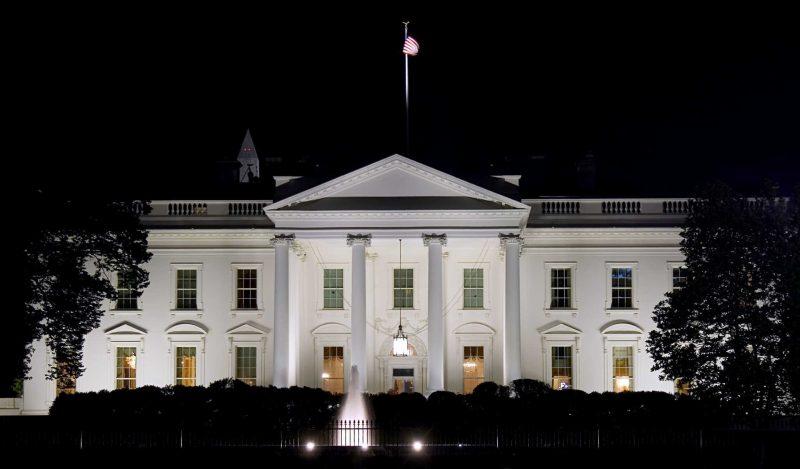
From the Brownstone Institute
By
Who Controls the Administrative State?
President Trump on March 20, 2025, ordered the following: “The Secretary of Education shall, to the maximum extent appropriate and permitted by law, take all necessary steps to facilitate the closure of the Department of Education.”
That is interesting language: to “take all necessary steps to facilitate the closure” is not the same as closing it. And what is “permitted by law” is precisely what is in dispute.
It is meant to feel like abolition, and the media reported it as such, but it is not even close. This is not Trump’s fault. The supposed authoritarian has his hands tied in many directions, even over agencies he supposedly controls, the actions of which he must ultimately bear responsibility.
The Department of Education is an executive agency, created by Congress in 1979. Trump wants it gone forever. So do his voters. Can he do that? No but can he destaff the place and scatter its functions? No one knows for sure. Who decides? Presumably the highest court, eventually.
How this is decided – whether the president is actually in charge or really just a symbolic figure like the King of Sweden – affects not just this one destructive agency but hundreds more. Indeed, the fate of the whole of freedom and functioning of constitutional republics may depend on the answer.
All burning questions of politics today turn on who or what is in charge of the administrative state. No one knows the answer and this is for a reason. The main functioning of the modern state falls to a beast that does not exist in the Constitution.
The public mind has never had great love for bureaucracies. Consistent with Max Weber’s worry, they have put society in an impenetrable “iron cage” built of bloodless rationalism, needling edicts, corporatist corruption, and never-ending empire-building checked by neither budgetary restraint nor plebiscite.
Today’s full consciousness of the authority and ubiquity of the administrative state is rather new. The term itself is a mouthful and doesn’t come close to describing the breadth and depth of the problem, including its root systems and retail branches. The new awareness is that neither the people nor their elected representatives are really in charge of the regime under which we live, which betrays the whole political promise of the Enlightenment.
This dawning awareness is probably 100 years late. The machinery of what is popularly known as the “deep state” – I’ve argued there are deep, middle, and shallow layers – has been growing in the US since the inception of the civil service in 1883 and thoroughly entrenched over two world wars and countless crises at home and abroad.
The edifice of compulsion and control is indescribably huge. No one can agree precisely on how many agencies there are or how many people work for them, much less how many institutions and individuals work on contract for them, either directly or indirectly. And that is just the public face; the subterranean branch is far more elusive.
The revolt against them all came with the Covid controls, when everyone was surrounded on all sides by forces outside our purview and about which the politicians knew not much at all. Then those same institutional forces appear to be involved in overturning the rule of a very popular politician whom they tried to stop from gaining a second term.
The combination of this series of outrages – what Jefferson in his Declaration called “a long train of abuses and usurpations, pursuing invariably the same Object” – has led to a torrent of awareness. This has translated into political action.
A distinguishing mark of Trump’s second term has been an optically concerted effort, at least initially, to take control of and then curb administrative state power, more so than any executive in living memory. At every step in these efforts, there has been some barrier, even many on all sides.
There are at least 100 legal challenges making their way through courts. District judges are striking down Trump’s ability to fire workers, redirect funding, curb responsibilities, and otherwise change the way they do business.
Even the signature early achievement of DOGE – the shuttering of USAID – has been stopped by a judge with an attempt to reverse it. A judge has even dared tell the Trump administration who it can and cannot hire at USAID.
Not a day goes by when the New York Times does not manufacture some maudlin defense of the put-upon minions of the tax-funded managerial class. In this worldview, the agencies are always right, whereas any elected or appointed person seeking to rein them in or terminate them is attacking the public interest.
After all, as it turns out, legacy media and the administrative state have worked together for at least a century to cobble together what was conventionally called “the news.” Where would the NYT or the whole legacy media otherwise be?
So ferocious has been the pushback against even the paltry successes and often cosmetic reforms of MAGA/MAHA/DOGE that vigilantes have engaged in terrorism against Teslas and their owners. Not even returning astronauts from being “lost in space” has redeemed Elon Musk from the wrath of the ruling class. Hating him and his companies is the “new thing” for NPCs, on a long list that began with masks, shots, supporting Ukraine, and surgical rights for gender dysphoria.
What is really at stake, more so than any issue in American life (and this applies to states around the world) – far more than any ideological battles over left and right, red and blue, or race and class – is the status, power, and security of the administrative state itself and all its works.
We claim to support democracy yet all the while, empires of command-and-control have arisen among us. The victims have only one mechanism available to fight back: the vote. Can that work? We do not yet know. This question will likely be decided by the highest court.
All of which is awkward. It is impossible to get around this US government organizational chart. All but a handful of agencies live under the category of the executive branch. Article 2, Section 1, says: “The executive Power shall be vested in a President of the United States of America.”

Does the president control the whole of the executive branch in a meaningful way? One would think so. It’s impossible to understand how it could be otherwise. The chief executive is…the chief executive. He is held responsible for what these agencies do – we certainly blasted away at the Trump administration in the first term for everything that happened under his watch. In that case, and if the buck really does stop at the Oval Office desk, the president must have some modicum of control beyond the ability to tag a marionette to get the best parking spot at the agency.
What is the alternative to presidential oversight and management of the agencies listed in this branch of government? They run themselves? That claim means nothing in practice.
For an agency to be deemed “independent” turns out to mean codependency with the industries regulated, subsidized, penalized, or otherwise impacted by its operations. HUD does housing development, FDA does pharmaceuticals, DOA does farming, DOL does unions, DOE does oil and turbines, DOD does tanks and bombs, FAA does airlines, and so on It goes forever.
That’s what “independence” means in practice: total acquiescence to industrial cartels, trade groups, and behind-the-scenes systems of payola, blackmail, and graft, while the powerless among the people live with the results. This much we have learned and cannot unlearn.
That is precisely the problem that cries out for a solution. The solution of elections seems reasonable only if the people we elected actually have the authority over the thing they seek to reform.
There are criticisms of the idea of executive control of executive agencies, which is really nothing other than the system the Founders established.
First, conceding more power to the president raises fears that he will behave like a dictator, a fear that is legitimate. Partisan supporters of Trump won’t be happy when the precedent is cited to reverse Trump’s political priorities and the agencies turn on red-state voters in revenge.
That problem is solved by dismantling agency power itself, which, interestingly, is mostly what Trump’s executive orders have sought to achieve and which the courts and media have worked to stop.
Second, one worries about the return of the “spoils system,” the supposedly corrupt system by which the president hands out favors to friends in the form of emoluments, a practice the establishment of the civil service was supposed to stop.
In reality, the new system of the early 20th century fixed nothing but only added another layer, a permanent ruling class to participate more fully in a new type of spoils system that operated now under the cloak of science and efficiency.
Honestly, can we really compare the petty thievery of Tammany Hall to the global depredations of USAID?
Third, it is said that presidential control of agencies threatens to erode checks and balances. The obvious response is the organizational chart above. That happened long ago as Congress created and funded agency after agency from the Wilson to the Biden administration, all under executive control.
Congress perhaps wanted the administrative state to be an unannounced and unaccountable fourth branch, but nothing in the founding documents created or imagined such a thing.
If you are worried about being dominated and destroyed by a ravenous beast, the best approach is not to adopt one, feed it to adulthood, train it to attack and eat people, and then unleash it.
The Covid years taught us to fear the power of the agencies and those who control them not just nationally but globally. The question now is two-fold: what can be done about it and how to get from here to there?
Trump’s executive order on the Department of Education illustrates the point precisely. His administration is so uncertain of what it does and can control, even of agencies that are wholly executive agencies, listed clearly under the heading of executive agencies, that it has to dodge and weave practical and legal barriers and land mines, even in its own supposed executive pronouncements, even to urge what might amount to be minor reforms.
Whoever is in charge of such a system, it is clearly not the people.
Brownstone Institute
The New Enthusiasm for Slaughter
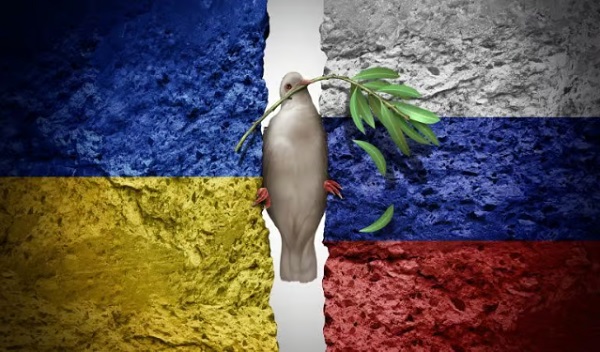
From the Brownstone Institute
By
What War Means
My mother once told me how my father still woke up screaming in the night years after I was born, decades after the Second World War (WWII) ended. I had not known – probably like most children of those who fought. For him, it was visions of his friends going down in burning aircraft – other bombers of his squadron off north Australia – and to be helpless, watching, as they burnt and fell. Few born after that war could really appreciate what their fathers, and mothers, went through.
Early in the movie Saving Private Ryan, there is an extended D-Day scene of the front doors of the landing craft opening on the Normandy beaches, and all those inside being torn apart by bullets. It happens to one landing craft after another. Bankers, teachers, students, and farmers being ripped in pieces and their guts spilling out whilst they, still alive, call for help that cannot come. That is what happens when a machine gun opens up through the open door of a landing craft, or an armored personnel carrier, of a group sent to secure a tree line.
It is what a lot of politicians are calling for now.
People with shares in the arms industry become a little richer every time one of those shells is fired and has to be replaced. They gain financially, and often politically, from bodies being ripped open. This is what we call war. It is increasingly popular as a political strategy, though generally for others and the children of others.
Of course, the effects of war go beyond the dismembering and lonely death of many of those fighting. Massacres of civilians and rape of women can become common, as brutality enables humans to be seen as unwanted objects. If all this sounds abstract, apply it to your loved ones and think what that would mean.
I believe there can be just wars, and this is not a discussion about the evil of war, or who is right or wrong in current wars. Just a recognition that war is something worth avoiding, despite its apparent popularity amongst many leaders and our media.
The EU Reverses Its Focus
When the Brexit vote determined that Britain would leave the European Union (EU), I, like many, despaired. We should learn from history, and the EU’s existence had coincided with the longest period of peace between Western European States in well over 2,000 years.
Leaving the EU seemed to be risking this success. Surely, it is better to work together, to talk and cooperate with old enemies, in a constructive way? The media, and the political left, center, and much of the right seemed at that time, all of nine years ago, to agree. Or so the story went.
We now face a new reality as the EU leadership scrambles to justify continuing a war. Not only continuing, but they had been staunchly refusing to even countenance discussion on ending the killing. It has taken a new regime from across the ocean, a subject of European mockery, to do that.
In Europe, and in parts of American politics, something is going on that is very different from the question of whether current wars are just or unjust. It is an apparent belief that advocacy for continued war is virtuous. Talking to leaders of an opposing country in a war that is killing Europeans by the tens of thousands has been seen as traitorous. Those proposing to view the issues from both sides are somehow “far right.”
The EU, once intended as an instrument to end war, now has a European rearmament strategy. The irony seems lost on both its leaders and its media. Arguments such as “peace through strength” are pathetic when accompanied by censorship, propaganda, and a refusal to talk.
As US Vice-President JD Vance recently asked European leaders, what values are they actually defending?
Europe’s Need for Outside Help
A lack of experience of war does not seem sufficient to explain the current enthusiasm to continue them. Architects of WWII in Europe had certainly experienced the carnage of the First World War. Apart from the financial incentives that human slaughter can bring, there are also political ideologies that enable the mass death of others to be turned into an abstract and even positive idea.
Those dying must be seen to be from a different class, of different intelligence, or otherwise justifiable fodder to feed the cause of the Rules-Based Order or whatever other slogan can distinguish an ‘us’ from a ‘them’…While the current incarnation seems more of a class thing than a geographical or nationalistic one, European history is ripe with variations of both.
Europe appears to be back where it used to be, the aristocracy burning the serfs when not visiting each other’s clubs. Shallow thinking has the day, and the media have adapted themselves accordingly. Democracy means ensuring that only the right people get into power.
Dismembered European corpses and terrorized children are just part of maintaining this ideological purity. War is acceptable once more. Let’s hope such leaders and ideologies can be sidelined by those beyond Europe who are willing to give peace a chance.
There is no virtue in the promotion of mass death. Europe, with its leadership, will benefit from outside help and basic education. It would benefit even further from leadership that values the lives of its people.
-

 Daily Caller2 days ago
Daily Caller2 days agoMisguided Climate Policies Create ‘Real Energy Emergency’ And Permit China To Dominate US
-

 International2 days ago
International2 days agoIce Surprises – Arctic and Antarctic Ice Sheets Are Stabilizing and Growing
-
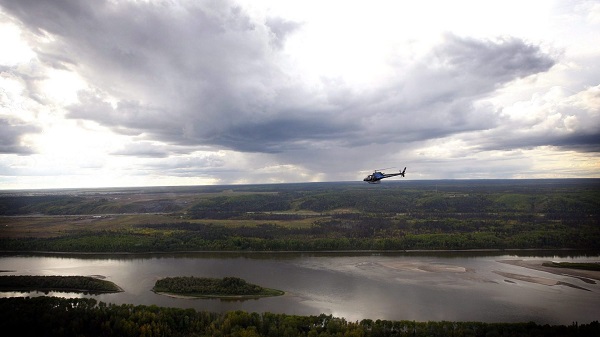
 Alberta2 days ago
Alberta2 days agoEnergy projects occupy less than three per cent of Alberta’s oil sands region, report says
-

 Energy2 days ago
Energy2 days agoCarney’s energy superpower rhetoric falls flat without policy certainty
-

 Energy2 days ago
Energy2 days agoOil tankers in Vancouver are loading plenty, but they can load even more
-

 2025 Federal Election1 day ago
2025 Federal Election1 day agoGroup that added dozens of names to ballot in Poilievre’s riding plans to do it again
-

 Alberta2 days ago
Alberta2 days agoCharges laid in record cocaine seizure
-

 conflict2 days ago
conflict2 days agoWATCH: U.S. ending bombing campaign on Yemeni militant group







